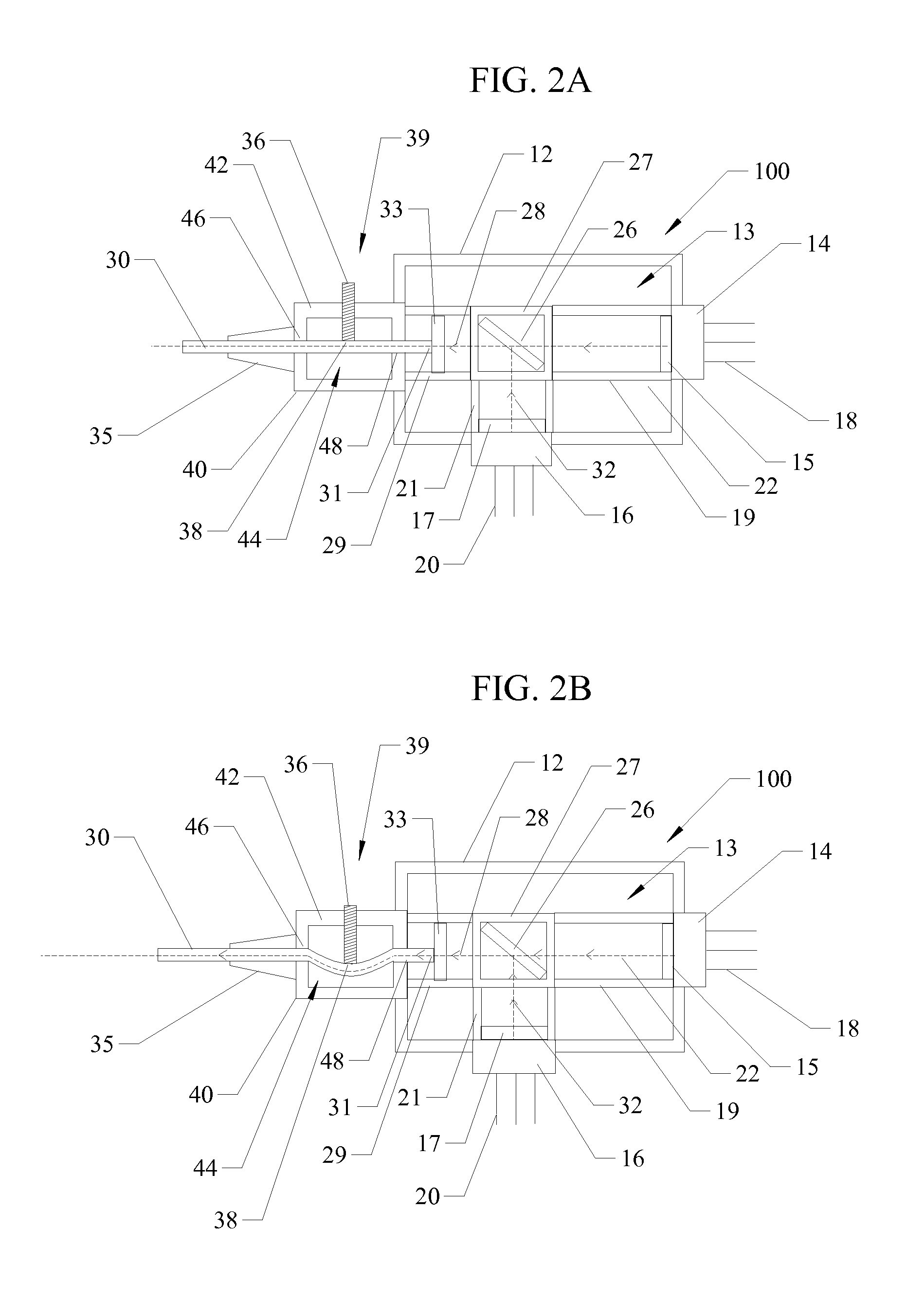Method, device, and system for controlling encircled flux
a technology of encircled flux and flux, applied in the direction of optics, lighting and heating apparatus, instruments, etc., can solve the problems of optical fiber overfilling, link loss measurement that is too high, reading may be overestimated, loss value that does not correspond to reality, etc., to achieve low operator skill, easy to use, and low cost.
- Summary
- Abstract
- Description
- Claims
- Application Information
AI Technical Summary
Benefits of technology
Problems solved by technology
Method used
Image
Examples
Embodiment Construction
[0036]Referring first to FIG. 1, an illustration of a prior art light module 10 is shown. The light module 10 shown in FIG. 1 is a type commonly used within fiber optic test instruments. Examples of such light modules are the FOD 3105 Dual LED Module, the FOD 3206 Laser Diode Module, and the FOD 3226 Triple LD Module, manufactured by Fiber Optic Devices of Vilnius, Lithuania. These light modules may have single or multiple light sources and may produce light of any wavelength. Such a light module may be used within any portable or stationary fiber optic test instrument, such as the EXFO FLS-300 Light Source, the FOD 2114 Triple Laser Light Source, the AFL Telecommunications Noyes® OLS1-Dual LED Light Source with Wave ID, the EXFO IQS-2100 Light Source, and the EXFO FLS-2200 Broadband Source, that may test single or multi-mode optical fibers.
[0037]The light module 10 of FIG. 1 is a dual light emitting diode (LED) light module that includes a housing 12, two LEDs 14 and 16 from which ...
PUM
 Login to View More
Login to View More Abstract
Description
Claims
Application Information
 Login to View More
Login to View More - R&D
- Intellectual Property
- Life Sciences
- Materials
- Tech Scout
- Unparalleled Data Quality
- Higher Quality Content
- 60% Fewer Hallucinations
Browse by: Latest US Patents, China's latest patents, Technical Efficacy Thesaurus, Application Domain, Technology Topic, Popular Technical Reports.
© 2025 PatSnap. All rights reserved.Legal|Privacy policy|Modern Slavery Act Transparency Statement|Sitemap|About US| Contact US: help@patsnap.com



